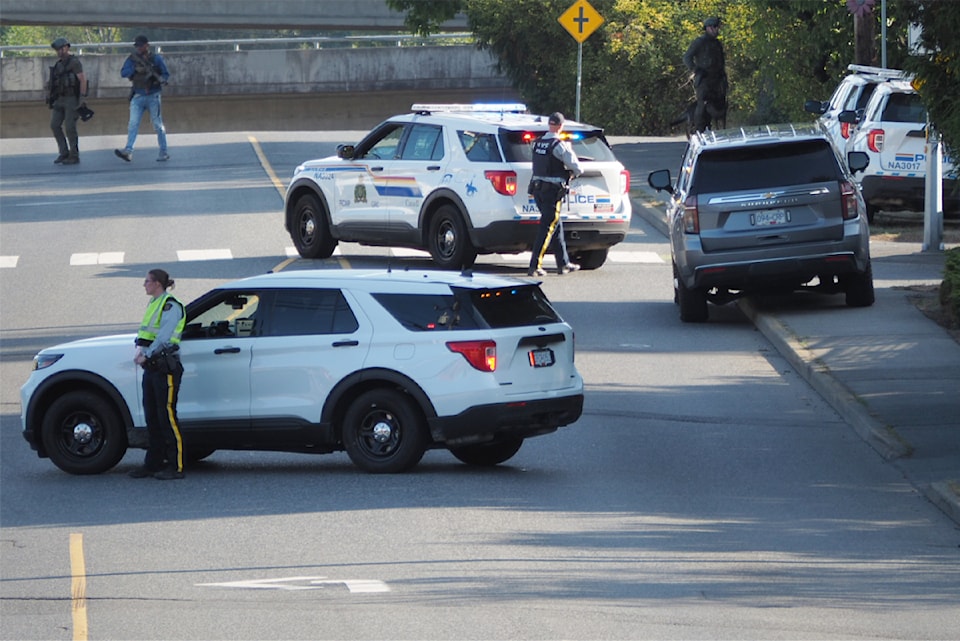Nanaimo’s crime rate has dropped, but the city's crime severity index is still in Canada’s top 10.
According to Statistics Canada data released last month, Nanaimo’s crime severity index fell two per cent in 2023 compared to 2022 and the city's crime rate overall went down nine per cent.
The crime rate, which excludes traffic offences, is based on the number of crimes per 100,000 population. Nanaimo in 2023 tallied 10,200 crimes.
Crime severity indexes are drawn from criminal code incidents reported by police departments across the country. They are meant as a representation of the seriousness of crimes committed, with violent crimes and child sex abuse cases, for example, ranking higher on the scale.
But in spite of lowered crime incident and severity figures, StatsCan still pegged Nanaimo as Canada’s sixth-worst municipality for crime severity after Kamloops, with the country's highest crime severity index of 165.3, followed by Chilliwack at 156.2; Red Deer, Alta., 146.3, and Lethbridge, Alta. and Winnipeg, which tied at 129.1. Nanaimo is followed by Kelowna with a CSI of 118.6, Regina at 111.6, Abbotsford-Mission, 107.6 and Edmonton, 105.
Those indexes don’t tell the whole story. Overall, Nanaimo appears to be bucking a trend of rising crime across Canada where the crime severity index, trending upward since 2015, rose for the third-straight year, up two per cent in 2023 compared to 2022. Non-violent crime, including property and drug-related offences, rose three per cent nationally in 2023.
A big contributor driving 2023 crime figures was a 52-per cent increase in police-reported child pornography offences, fuelled by increased reporting of old and new cases being forwarded to local police by provincial and national internet child exploitation units, according to StatsCan’s report. Fraud was up 12 per cent, shoplifting jumped 18 per cent and motor vehicle theft rose five per cent. Breaking and entering, on the other hand, has continued its downward trend since the 1990s and dropped five per cent.
The national crime severity index remained essentially unchanged, up 0.4 per cent in 2023. Rates for homicide dropped 14 per cent and child sex abuse fell 10 per cent in 2023, but rates were higher for extortion, up 35 per cent, robbery, up four per cent, and assault with a weapon or causing bodily harm, up seven per cent.
"We're seeing a general decrease in non-violent offences and a general increase in violent offences, but that needs to be qualified, though," said reserve Const. Gary O'Brien, Nanaimo RCMP spokesperson. "2023 was a significant year for policing in Nanaimo where we saw a general decrease in almost every category."
O'Brien cited decreases in auto and bike thefts, break-and-enters and other thefts from properties, possession of stolen property and shoplifting.
"One of the main reasons for those is our [staffing] numbers are getting back up. We struggled for a number of years, especially during COVID and afterwards through the Black Lives Matter and defund the police phenomena where people were not applying for the RCMP. We couldn't get our numbers up, we had a lot of significant injuries and … our front-line resources were depleted."
To prioritize public safety, the detachment collapsed specialized units.
"Therefore, you wouldn't see the proactive policing through our drug unit, in our special investigations section where they're targeting child porn and significant frauds, our traffic section," he said "Traffic is huge because the public has to see that uniformed presence on the street and it acts as a deterrent."
Staffing levels have recovered and specialized units, such as the special investigation targeted enforcement team that focuses on repeat violent offenders, are active.
“What you’re seeing is assertive, proactive policing going after repeat violent offenders … They’re going after people who often use violence as a way of solving their problems and they’re getting these people before the courts and what we’re seeing is they’re going off the streets for longer periods of time,” O’Brien said.
The result is a direct impact on the calls for service – one problem offender can cause multiple calls in a day – and frees up resources for other policing tasks, but addiction and mental health issues continue to tax police resources.
“A lot of what we’re seeing is assaults, uttering threats and weapons offences,” O’Brien said. “It’s directly correlated to a significant unhoused population in Nanaimo with undocumented mental health issues. You couple that with the throes of one or two different addictions and it’s a recipe for disaster.”
Child pornography and child exploitation case numbers remain high locally, he said, because compared to other municipalities, Nanaimo has the resources to target and investigate offenders.
Statistics Canada cautions that a city’s crime severity index shouldn’t be used “as a universal indicator of an area's overall safety,” but rather in a broader context with other information about a community’s safety and crime and other characteristics, such “as population and demographics, labour market conditions and activities, employment and income, and housing and families.”



